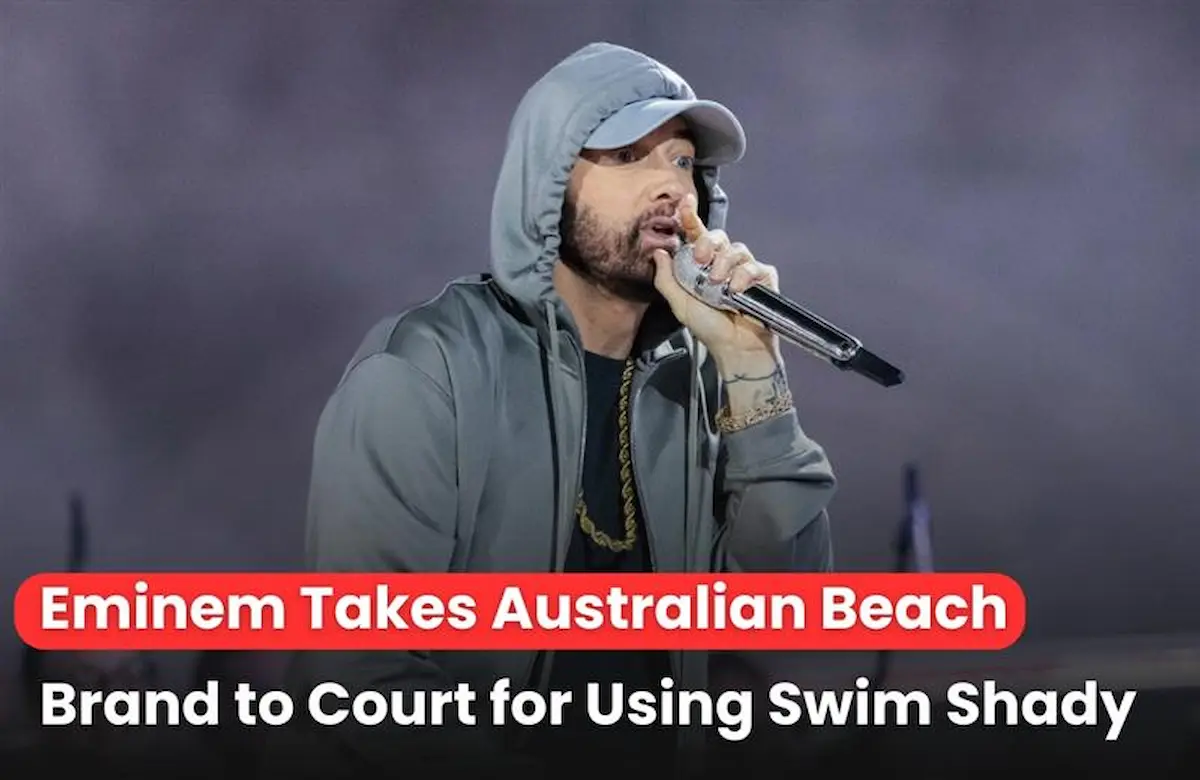
Eminem has been a rap icon for years, known worldwide for his chart-topping tracks and record-breaking career. But this time, he’s in the headlines for something very different—a trademark battle, Eminem vs Swim Shady trademark case. The rapper has filed a case against an Australian beachwear brand for using a name that sounds a little too close to his legendary stage name, Slim Shady. It’s a great example of how artists today are more aware than ever of their intellectual property rights and aren’t afraid to protect their brand. Keep reading to find out what really happened in this case and stay updated on the latest IP news from India and around the world.
How Did an Australian Beach Brand End Up in a Trademark Fight With Eminem?
To really understand the Eminem vs Swim Shady trademark case, we first need to look at Eminem’s connection to the name Slim Shady—a name the world has known him by for decades. Eminem introduced Slim Shady early in his career as a bold, unfiltered alter ego who said things no one else would dare to. The persona exploded in popularity with The Slim Shady EP in 1997 and The Slim Shady LP in 1999, which pushed him into global stardom. Since then, “Slim Shady” has become much more than a nickname—it’s a huge part of his brand, his image, and even his merchandise. He’s referenced Slim Shady in countless songs, and fans instantly associate the name with him.
That’s why the trademark dispute began when an Australian beachwear brand called Swim Shady launched in late 2024, selling beach umbrellas, towels, bags, and other sun-protection gear. The name immediately raised eyebrows because it sounds so close to Eminem’s iconic alter ego. The company says it’s just a fun play on the word “shade,” but Eminem’s team saw it as a potential case of trademark infringement. In October 2024, he opposed their trademark application in Australia, and when the brand secured a U.S. trademark in 2025, he filed a petition to cancel that one too. His argument is simple: people might think the brand is connected to or endorsed by him. Swim Shady insists they’re a small, independent business with no ties to the rapper, but Eminem’s legal action shows he’s not willing to let anyone earn money on the name that’s defined his career.
Read Also: EUIPO Opens Applications for the 2026 DesignEuropa Awards
What Happens Next in the Eminem vs Swim Shady Trademark Case?

It’s still way too early to expect any major updates on Eminem vs Swim Shady trademark case. According to reports, the dispute is only in its beginning stages, and neither the Australian courts nor the USPTO has made any decisions yet. What we do know is that Eminem’s filings have been officially accepted for review, which means both authorities will now dig into the big question: does Swim Shady sound too close to Slim Shady, and could it confuse people? From here, both sides will present evidence—everything from how famous the Slim Shady name is to how the beachwear brand markets itself. Depending on how things play out, the results could go in several directions: Swim Shady might be asked to rebrand, the parties could reach a settlement, or the trademark could be cancelled in one or both countries. For now, the case is entering the formal review phase, and what happens next will decide whether the Australian brand gets to keep its name or will have to start fresh.
Read Also: Calcutta High Court Invalidates JAYS Trademark After Trademark Dispute with PepsiCo
Conclusion
The Eminem vs Swim Shady trademark case is a reminder of how powerful—and protected—a famous name can be. As the dispute moves through its early legal stages, all eyes are on whether the courts will see “Swim Shady” as harmless wordplay or a real threat to a globally recognized brand. For now, the final outcome is still up in the air, but one thing is clear: artists and creators are more vigilant than ever about defending their intellectual property, no matter where in the world the challenge comes from.
FAQs (Frequently Asked Questions)
Q. What products does Swim Shady sell?
- Swim Shady sells beachwear and sun-protection items such as umbrellas, towels, and swim bags.
Q. Why did Eminem sue Swim Shady?
- Eminem Sues Swim Shady because Swim Shady is violating his trademark.
